-
 Bitcoin
Bitcoin $108,262.4325
-1.40% -
 Ethereum
Ethereum $2,518.2882
-2.94% -
 Tether USDt
Tether USDt $1.0003
-0.01% -
 XRP
XRP $2.2262
-1.71% -
 BNB
BNB $653.9254
-1.55% -
 Solana
Solana $148.1036
-3.11% -
 USDC
USDC $1.0000
0.01% -
 TRON
TRON $0.2829
-1.45% -
 Dogecoin
Dogecoin $0.1639
-4.82% -
 Cardano
Cardano $0.5742
-4.43% -
 Hyperliquid
Hyperliquid $38.9506
-3.95% -
 Sui
Sui $2.9040
-4.34% -
 Bitcoin Cash
Bitcoin Cash $484.8307
-2.62% -
 Chainlink
Chainlink $13.1971
-3.73% -
 UNUS SED LEO
UNUS SED LEO $9.0822
0.51% -
 Avalanche
Avalanche $17.8613
-4.01% -
 Stellar
Stellar $0.2385
-2.26% -
 Toncoin
Toncoin $2.7570
-3.88% -
 Shiba Inu
Shiba Inu $0.0...01145
-3.99% -
 Litecoin
Litecoin $86.9999
-2.43% -
 Hedera
Hedera $0.1538
-3.90% -
 Monero
Monero $313.7554
-2.03% -
 Polkadot
Polkadot $3.3681
-5.08% -
 Dai
Dai $1.0000
0.00% -
 Ethena USDe
Ethena USDe $1.0001
-0.01% -
 Bitget Token
Bitget Token $4.4401
-2.97% -
 Uniswap
Uniswap $6.9644
-8.41% -
 Pepe
Pepe $0.0...09666
-4.79% -
 Aave
Aave $266.5686
-5.04% -
 Pi
Pi $0.4713
-4.95%
What are the HBAR order placement skills? How to improve transaction efficiency?
To trade HBAR efficiently, use limit orders for precise entry/exit, stop-loss orders for risk management, and monitor market depth to minimize slippage.
May 01, 2025 at 03:42 pm
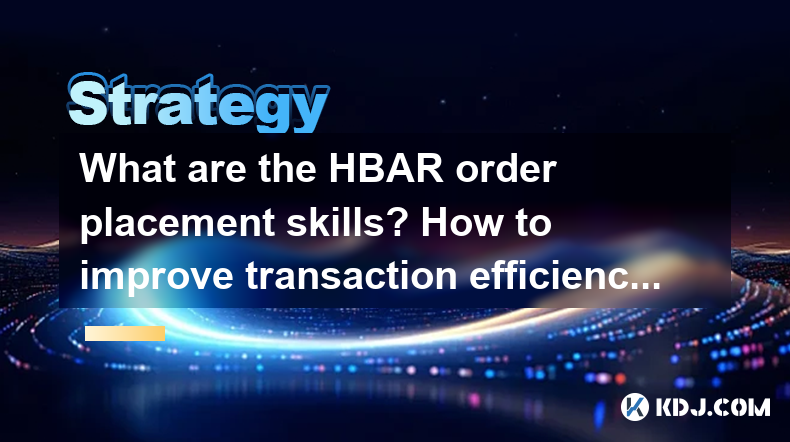
In the world of cryptocurrency, HBAR (Hedera Hashgraph) is a unique platform known for its high transaction throughput and low latency. To maximize the benefits of trading HBAR, it is crucial to understand effective order placement skills and strategies to improve transaction efficiency. This article will delve into these topics in detail, providing traders with the knowledge they need to navigate the HBAR market effectively.
Understanding HBAR Order Types
When trading HBAR, it's essential to understand the different types of orders you can place. Each type of order serves a different purpose and can affect your trading strategy and efficiency.
Limit Orders: A limit order allows you to specify the price at which you want to buy or sell HBAR. For example, if you want to buy HBAR at $0.10 per token, you can place a limit order at that price. The order will only execute if the market reaches or surpasses that price.
Market Orders: A market order is executed immediately at the current market price. This type of order is useful when you want to enter or exit a position quickly, but it can result in slippage, especially in volatile markets.
Stop Orders: A stop order becomes a market order once a specified price level is reached. For instance, if you want to limit your losses on a long position, you can place a stop order to sell HBAR if the price drops to a certain level.
Stop-Limit Orders: This is a combination of a stop order and a limit order. Once the stop price is reached, the order becomes a limit order, which is executed at the specified limit price or better.
Strategies for Effective Order Placement
To improve your order placement skills when trading HBAR, consider the following strategies:
Use Limit Orders to Control Entry and Exit Points: By using limit orders, you can ensure that you buy or sell HBAR at a price you're comfortable with. This can help you avoid the unpredictability of market orders, especially in volatile markets.
Implement Stop-Loss Orders to Manage Risk: Using stop-loss orders can help you limit potential losses. For example, if you buy HBAR at $0.10, you might set a stop-loss order at $0.09 to limit your loss to 10%.
Utilize Stop-Limit Orders for Precise Execution: Stop-limit orders can be useful in volatile markets. For instance, if you want to sell HBAR when the price reaches $0.11, you can set a stop price of $0.11 and a limit price of $0.105. This ensures that your order is executed within a specific price range.
Monitor Market Depth and Liquidity: Before placing an order, check the order book to understand the current market depth and liquidity. This can help you determine the best price at which to place your order and avoid large slippage.
Improving Transaction Efficiency
To enhance your transaction efficiency when trading HBAR, consider the following tips:
Choose the Right Exchange: Different exchanges have varying levels of liquidity and fees. Choose an exchange that offers high liquidity for HBAR and competitive fees to minimize transaction costs.
Use Advanced Order Types: Many exchanges offer advanced order types, such as iceberg orders or time-in-force orders. These can help you manage large orders more efficiently and minimize market impact.
Optimize Your Trading Strategy: Develop a trading strategy that aligns with your goals and risk tolerance. Whether you're a day trader or a long-term investor, having a clear strategy can help you make more efficient trading decisions.
Leverage Technology: Use trading bots and algorithms to automate your trading process. These tools can help you execute trades more quickly and efficiently, especially in fast-moving markets.
Practical Steps for Placing HBAR Orders
Here are detailed steps for placing different types of HBAR orders on a typical cryptocurrency exchange:
Placing a Limit Order:
- Log into your exchange account.
- Navigate to the HBAR trading pair.
- Select "Limit Order" from the order type options.
- Enter the amount of HBAR you want to buy or sell.
- Specify the price at which you want the order to execute.
- Review your order details and submit the order.
Placing a Market Order:
- Log into your exchange account.
- Navigate to the HBAR trading pair.
- Select "Market Order" from the order type options.
- Enter the amount of HBAR you want to buy or sell.
- Review your order details and submit the order.
Placing a Stop Order:
- Log into your exchange account.
- Navigate to the HBAR trading pair.
- Select "Stop Order" from the order type options.
- Enter the amount of HBAR you want to buy or sell.
- Specify the stop price at which the order should be triggered.
- Review your order details and submit the order.
Placing a Stop-Limit Order:
- Log into your exchange account.
- Navigate to the HBAR trading pair.
- Select "Stop-Limit Order" from the order type options.
- Enter the amount of HBAR you want to buy or sell.
- Specify the stop price at which the order should be triggered.
- Specify the limit price at which the order should be executed.
- Review your order details and submit the order.
Monitoring and Adjusting Orders
Once you've placed your orders, it's important to monitor and adjust them as needed to maintain efficiency and manage risk.
Monitor Market Conditions: Keep an eye on market trends and news that could affect HBAR prices. Adjust your orders accordingly to take advantage of new opportunities or mitigate risks.
Use Order Alerts: Many exchanges offer order alerts that notify you when certain conditions are met. Set up alerts for price levels, order executions, or other relevant events to stay informed.
Cancel and Replace Orders: If market conditions change, you may need to cancel and replace your orders. For example, if you placed a limit order to buy HBAR at $0.10 but the market is trending upwards, you might want to cancel that order and place a new one at a higher price.
Review Your Trading Performance: Regularly review your trading performance to identify areas for improvement. Analyze your order placement strategies and transaction efficiency to refine your approach.
Frequently Asked Questions
Q: Can I use HBAR for staking and how does it affect my trading strategy?
A: Yes, HBAR can be staked to earn rewards. Staking can be part of your trading strategy as it provides an additional income stream. However, you'll need to consider the lock-up period and potential opportunity costs when deciding how much HBAR to stake versus trade.
Q: How does the Hedera Hashgraph consensus mechanism impact HBAR trading?
A: The Hedera Hashgraph consensus mechanism is designed for high throughput and low latency, which can lead to more efficient trading. However, traders should be aware of the unique characteristics of the network, such as the potential for rapid price movements due to its efficiency.
Q: Are there any specific regulatory considerations when trading HBAR?
A: Regulatory considerations can vary by jurisdiction. It's important to stay informed about the regulatory environment in your region, as it can impact your ability to trade HBAR and the platforms you can use.
Q: How can I protect my HBAR holdings from potential security threats?
A: To protect your HBAR holdings, use secure wallets, enable two-factor authentication on your exchange accounts, and be cautious of phishing attempts. Regularly update your software and stay informed about potential security threats in the cryptocurrency space.
Disclaimer:info@kdj.com
The information provided is not trading advice. kdj.com does not assume any responsibility for any investments made based on the information provided in this article. Cryptocurrencies are highly volatile and it is highly recommended that you invest with caution after thorough research!
If you believe that the content used on this website infringes your copyright, please contact us immediately (info@kdj.com) and we will delete it promptly.
- Bitcoin's Pattern Break: Are HODLers the Key to the Next Surge?
- 2025-07-04 18:50:12
- Bitcoin Price, Trump's Bill, and the $150K Dream: A NYC Take
- 2025-07-04 19:50:12
- Ethereum, LILPEPE, and the July Bounce: Will Pepe Steal ETH's Thunder?
- 2025-07-04 19:10:12
- Binance Institutional Loans: Unlocking 4x Leverage and Zero Interest for Whales
- 2025-07-04 19:15:12
- Bitcoin Bull Run: Analysts Eye Peak in Late 2025?
- 2025-07-04 19:20:13
- Pepe Indicators, Bullish Forecast: Can the Meme Coin Rally?
- 2025-07-04 19:25:12
Related knowledge
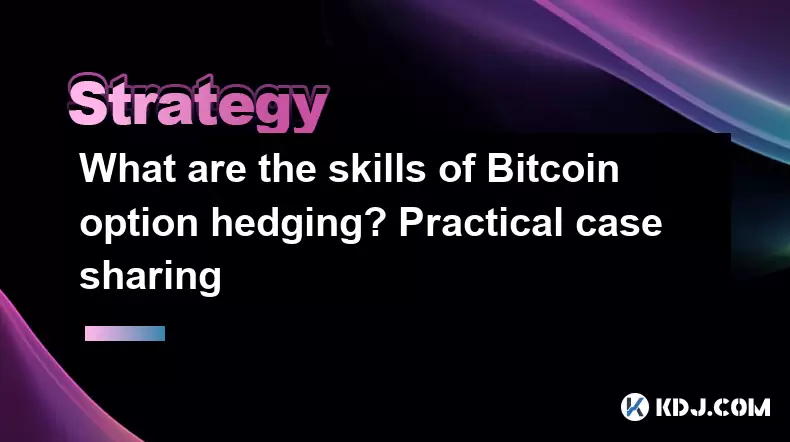
What are the skills of Bitcoin option hedging? Practical case sharing
Jun 24,2025 at 04:01pm
Understanding Bitcoin Option HedgingBitcoin option hedging is a risk management strategy used by traders and investors to protect their positions in the volatile cryptocurrency market. By using options, individuals can limit potential losses while retaining the opportunity for profit. In essence, it allows one to insulate against adverse price movements...
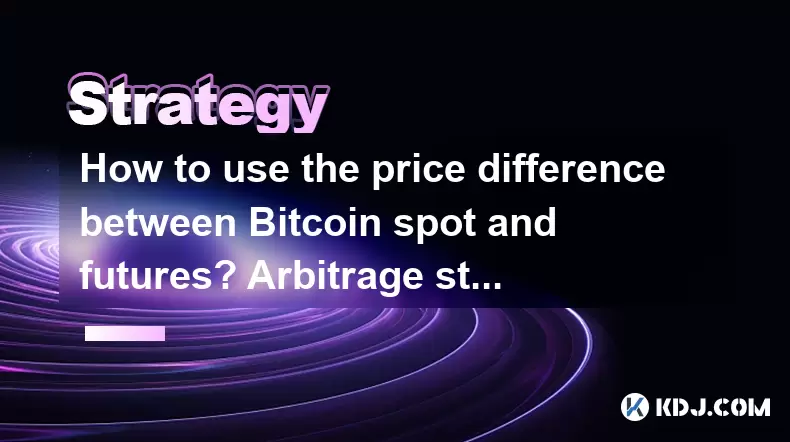
How to use the price difference between Bitcoin spot and futures? Arbitrage strategy
Jun 20,2025 at 02:56pm
Understanding Bitcoin Spot and Futures MarketsTo effectively leverage arbitrage opportunities between Bitcoin spot and futures markets, it's essential to understand the fundamental differences between these two types of markets. The spot market refers to the direct buying and selling of Bitcoin for immediate delivery at the current market price. In cont...

How to increase DeFi lending income? Strategy and risk analysis
Jun 24,2025 at 02:08pm
Understanding DeFi Lending and Its Income PotentialDeFi (Decentralized Finance) lending has emerged as a popular way to earn passive income in the cryptocurrency space. Unlike traditional banking systems, DeFi lending platforms allow users to lend their crypto assets directly to borrowers without intermediaries. The lenders earn interest based on the su...
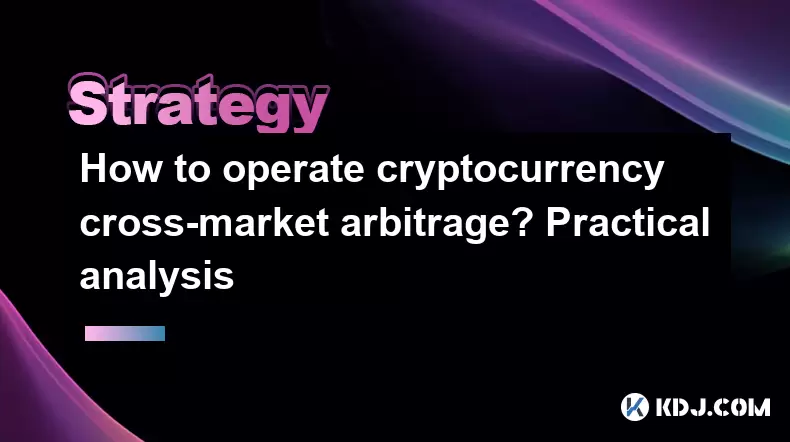
How to operate cryptocurrency cross-market arbitrage? Practical analysis
Jun 23,2025 at 04:01am
Understanding Cryptocurrency Cross-Market ArbitrageCryptocurrency cross-market arbitrage involves taking advantage of price differences for the same digital asset across different exchanges. The core idea is to buy low on one exchange and sell high on another, capturing the profit from the discrepancy. This strategy relies heavily on real-time market da...

How to make profits from high-frequency cryptocurrency trading? Sharing core skills
Jun 19,2025 at 05:07pm
Understanding High-Frequency Cryptocurrency TradingHigh-frequency trading (HFT) in the cryptocurrency market involves executing a large number of trades at extremely fast speeds, often within milliseconds. This method relies on small price discrepancies across exchanges or within a single exchange’s order book. Traders use complex algorithms and ultra-l...
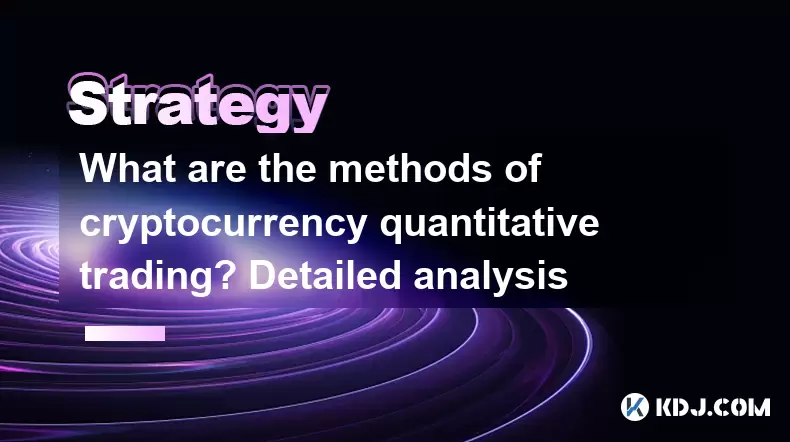
What are the methods of cryptocurrency quantitative trading? Detailed analysis
Jun 22,2025 at 11:07pm
Understanding the Core of Cryptocurrency Quantitative TradingCryptocurrency quantitative trading refers to the use of mathematical models and algorithms to execute trades in the digital asset market. Unlike traditional discretionary trading, which relies heavily on human judgment, quantitative trading leverages data-driven strategies to identify profita...

What are the skills of Bitcoin option hedging? Practical case sharing
Jun 24,2025 at 04:01pm
Understanding Bitcoin Option HedgingBitcoin option hedging is a risk management strategy used by traders and investors to protect their positions in the volatile cryptocurrency market. By using options, individuals can limit potential losses while retaining the opportunity for profit. In essence, it allows one to insulate against adverse price movements...

How to use the price difference between Bitcoin spot and futures? Arbitrage strategy
Jun 20,2025 at 02:56pm
Understanding Bitcoin Spot and Futures MarketsTo effectively leverage arbitrage opportunities between Bitcoin spot and futures markets, it's essential to understand the fundamental differences between these two types of markets. The spot market refers to the direct buying and selling of Bitcoin for immediate delivery at the current market price. In cont...

How to increase DeFi lending income? Strategy and risk analysis
Jun 24,2025 at 02:08pm
Understanding DeFi Lending and Its Income PotentialDeFi (Decentralized Finance) lending has emerged as a popular way to earn passive income in the cryptocurrency space. Unlike traditional banking systems, DeFi lending platforms allow users to lend their crypto assets directly to borrowers without intermediaries. The lenders earn interest based on the su...

How to operate cryptocurrency cross-market arbitrage? Practical analysis
Jun 23,2025 at 04:01am
Understanding Cryptocurrency Cross-Market ArbitrageCryptocurrency cross-market arbitrage involves taking advantage of price differences for the same digital asset across different exchanges. The core idea is to buy low on one exchange and sell high on another, capturing the profit from the discrepancy. This strategy relies heavily on real-time market da...

How to make profits from high-frequency cryptocurrency trading? Sharing core skills
Jun 19,2025 at 05:07pm
Understanding High-Frequency Cryptocurrency TradingHigh-frequency trading (HFT) in the cryptocurrency market involves executing a large number of trades at extremely fast speeds, often within milliseconds. This method relies on small price discrepancies across exchanges or within a single exchange’s order book. Traders use complex algorithms and ultra-l...

What are the methods of cryptocurrency quantitative trading? Detailed analysis
Jun 22,2025 at 11:07pm
Understanding the Core of Cryptocurrency Quantitative TradingCryptocurrency quantitative trading refers to the use of mathematical models and algorithms to execute trades in the digital asset market. Unlike traditional discretionary trading, which relies heavily on human judgment, quantitative trading leverages data-driven strategies to identify profita...
See all articles

























































































